Articles about 어린이
놀이용 인터페이스: 어린이를 위한 대화형 경험 설계

어린이의 인지 및 신체적 특징이 터치스크린을 통한 그들의 상호작용에 어떻게 영향을 미치는지를 이해하면 디자이너가 연령과 문해능력에 상관없이 모든 사용자들에게 즐거운 경험을 만들어내는 데 도움이 됩니다. [자세히 읽기]
세서미 스트리트, 글자 블록, 그리고 증강 현실: 늘어나는 참여와 학습
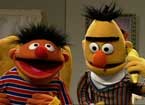
전통적 글자 블록과 글자 기반의 태블릿 콘텐츠가 접목된 비선형 놀이 경험을 디자인하면서 얻은 교훈. [자세히 읽기]
비트 뒤집기: 아동을 위한 창의적 매체로서의 기술 활용
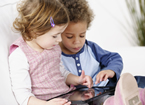
기술은 수많은 역할을 할 수 있습니다. 동반자도 될 수 있고, 수행자도 될 수 있고 공급자도 될 수 있습니다. 그래서 아이들이 자신의 환경과 자기만의 발전을 구체화하는 경험을 창출하는 데 도움을 줄 수 있습니다. [자세히 읽기]
가르침을 통한 테스트: 또래 교사, 어린이를 위한 사용성 평가법

또래 교사(Peer Tutoring)는 어린이와 함께 사용성 평가를 할 때 LEGO 그룹이 성공적으로 사용한 방법입니다. 또래 교사 방법을 통해 한 아이가 선생님 역할을 하며 그 아이 고유의 단어로 디지털 제품을 친구에게 설명합니다. [자세히 읽기]
(English) Electric Racer to Promote Literacy: A Game for Two Inter-Generational Players
(English) This study indicated that educational gameplay benefited from clarity around players’ roles, enabling parents’ participation, furthering the learning process for the child players. [자세히 읽기]
(English) What’s News: Mommy, Can I Play with Your iPhone?
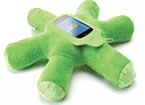
(English) The Woogie, a stuffed animal into which you can insert your iPhone, helps childproof your phone, however parents must monitor the content their children view. [자세히 읽기]
(English) MESS Days: Working with Children to Design and Deliver Worthwhile Mobile Experiences
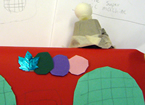
(English) Designing with children adds a new dimension to user experience design and usability testing. Our understanding in how children can best contribute is still developing. [자세히 읽기]
(English) Designing for Children: Supporting Positive Youth Development through Social Media

(English) Positive Technological Development aims to assist children in bettering their world through improving their technological literacy. [자세히 읽기]
(English) Testing by Minors: Risk Prevention for UX Pros
(English) When conducting testing with children, full disclosure and reasonable procedures are your best defense against potential legal complications. [자세히 읽기]
(English) You Need an Outlet and a Browser: How Children Understand and Use the Internet

(English) Children are not the most effective Web users and more research is needed to explore children’s mental models related to Internet use. [자세히 읽기]
(English) Looking Closely at e-Learning: Vision Research Reveals Ways to Improve Children’s Experiences
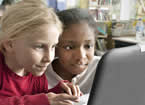
(English) Research on the effects of children’s long-term computer use is extremely limited; there remain key research questions that need to be answered. [자세히 읽기]
(English) The Story Behind the One Laptop per Child PC: An Inteview with Yves Béhar
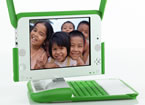
(English) Yves Béhar is the designer behind the One Laptop per Child Personal Computer (OLPC). He is interviewed by User Experience guest editor Cynthia Kamishlian. [자세히 읽기]
(English) Designing for Children with ADHD: The Search for Guidelines for Non-Experts

(English) Expert designers sensitive to established usability guidelines should be capable of designing software that is suitable for both ADHD and non-ADHD children. [자세히 읽기]
(English) Kidsteam: Co-designing Children’s Technologies with Children
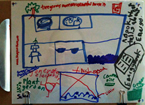
(English) Adults and children work together as part of Kidsteam to design new technologies for children using a low-tech prototyping experience. [자세히 읽기]
(English) Keep It Simple. At First: Designing Game-Based Tools for Youth
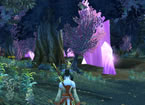
(English) Research with adolescent World of Warcraft players indicated design strategies that will help make Massive Multiplayer Online Game more accessible for individuals of all ages. [자세히 읽기]
(English) Designing Technologies for Marginalized Children
(English) Information and communication technologies provide great opportunities and challenges for marginalized children both in developed and developing regions. [자세히 읽기]
(English) Editor’s Note: Combining Children, Technology, and Usability

(English) This issue addresses our understanding and insights into how children interact with technology and how usability professionals can include children in the design process. [자세히 읽기]
(English) Superphone to the Rescue!
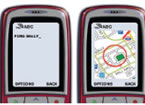
(English) Cell phones with kid finders and one button emergency calls. Music on a memory stick. [자세히 읽기]
(English) The First Issue (Issue 1.1)
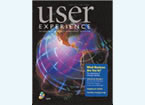
(English) The first issue of User Experience Magazine. The lead article is on strategic usability. [자세히 읽기]

